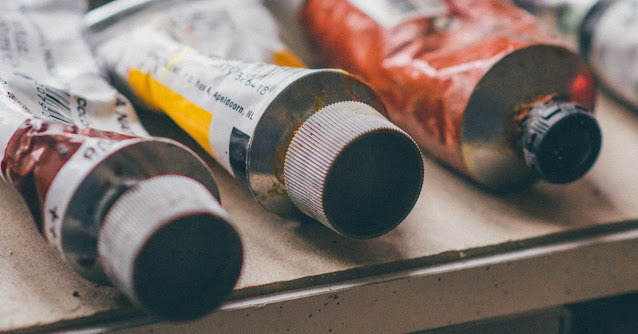Differences between Acrylic and Oil paints
Are you trying to decide between Oil and Acrylic paint?
You've arrived to the correct spot if you're seeking for paint advice and art ideas for ceramics, wood, portraits, or other mediums. One of the first art mediums, painting offers a distinctive and enjoyable opportunity to experiment with creative expression. "Creative expression has the power to improve wellbeing through helping us understand ourselves and shifting perspectives that reinforce positive behaviors," claims Art and Healing. Creating art has been shown to lower blood pressure, enhance cognitive function, battle inflammation, and fortify the immune system. Everyone wins in this situation.
Main Differences between Acrylic vs Oil Paint
How they Made?
Thick and Viscous, oil paints are created with color pigments, binding agents and an oil base (often linseed or safflower). Additionally, their consistency is creamy and silky. Similar to oils, acrylic paints are made without oil. Because they are based on water, using them is safer. They're an excellent choice for newbies. You can practice and refine your techniques prior painting using oil paints.
How to Use Them
Since acrylic can be applied to any kind of surface—from paper, plastic, and canvas to cloth, wood, metal, and glass—it's a great option for newbies. Yes, it dries rapidly.
Why then use oil over acrylic? Oil paints require more drying time and are thinner. You now have more time to work with them as a result. You can begin painting, pause, and return later to complete it. Oil paints must be applied on a prepared canvas or board because oil is a component of the mixture.
Drawbacks and Advantages
Acrylic paints provide a clean edge. Areas can be masked to provide visual lines. Although acrylic paints are more difficult to blend than oil paints, they maintain their brightness over time.
The color of acrylic paint might shift when it dries, which is a drawback. The paint may appear lighter when initially applied, but it will eventually dry to a darker tint.
Oil paint is a great option for seamless mixing. You can simply blend colors and create smooth lines because they dry slowly. Oil paints are typically monochromatic, though they may eventually become yellow in tone.
Acrylic versus Oil Paint Cost
Oil paint versus acrylic costs differ. With oil paint, you'll have to utilize more specific things, for example, a dissolvable and unique paint brushes, which can be more costly. Oil paints require a prepared material.
You can likewise prepare yourself. While painting with oil paints, you should be in a very much ventilated room as some oil paints contain added substances like turpentine, stain or mineral spirits.
Acrylic paint is a more straightforward and less tedious paint type. You can involve water as an added substance if necessary, which puts acrylic paint at the lower end of the cost range.



Comments
Post a Comment